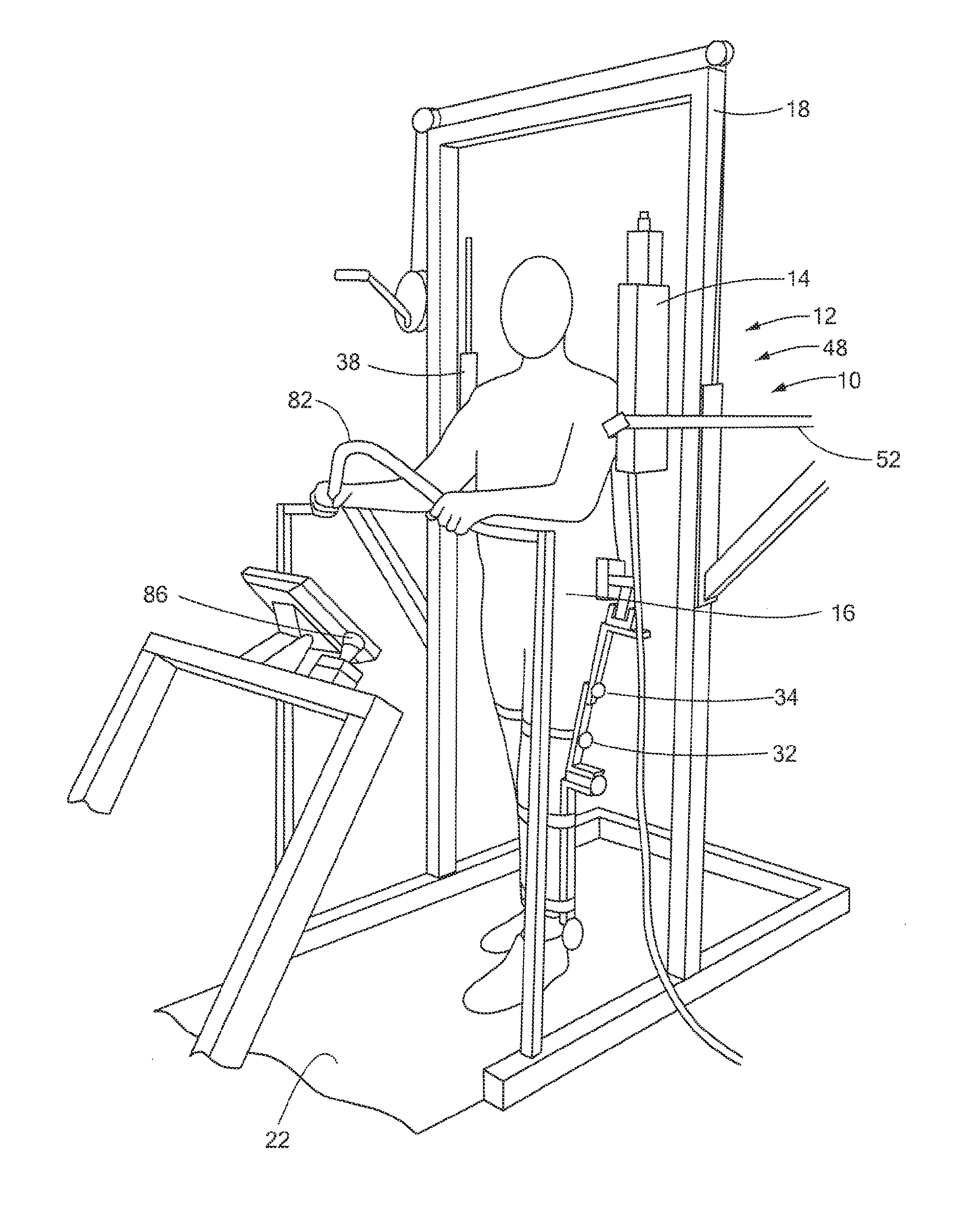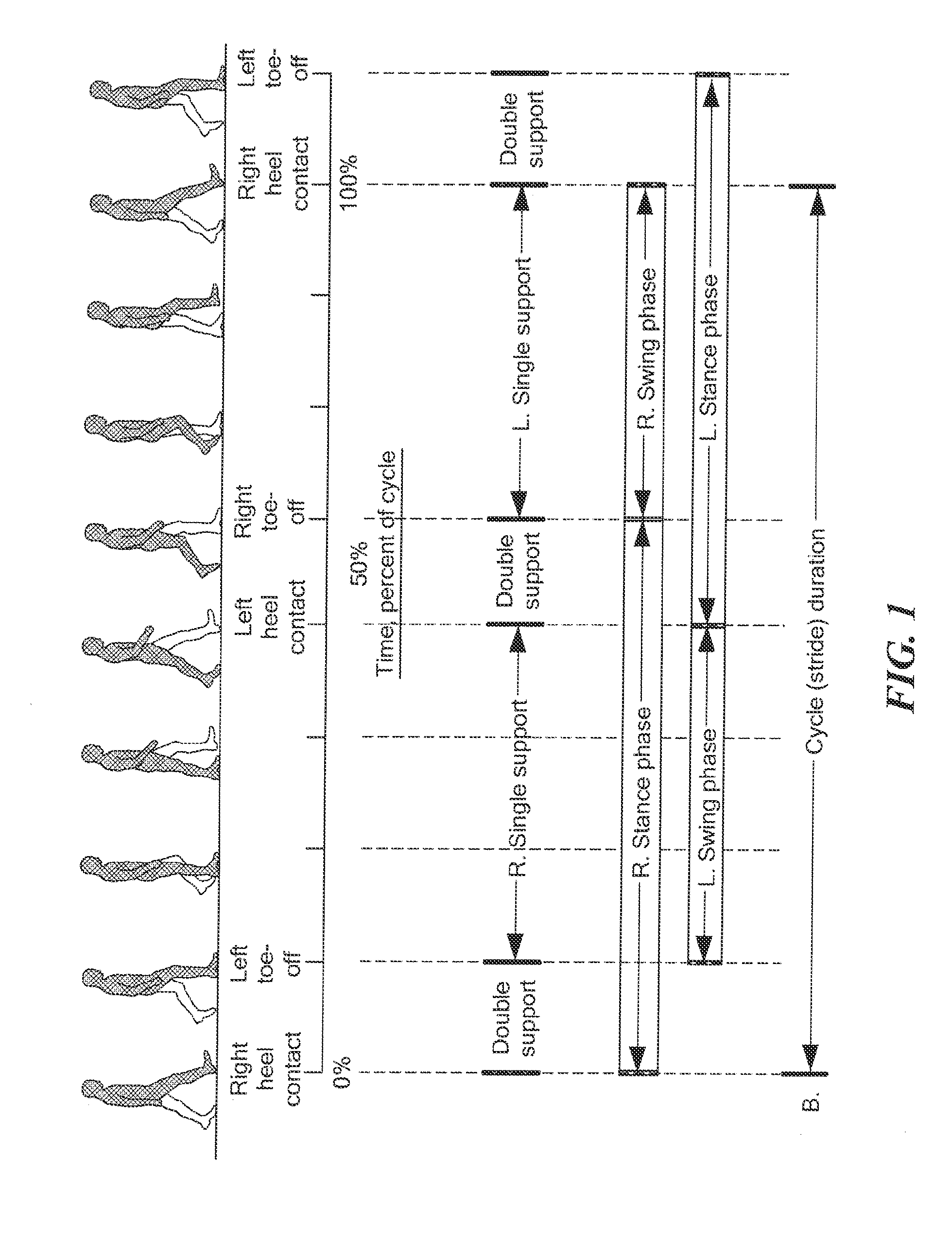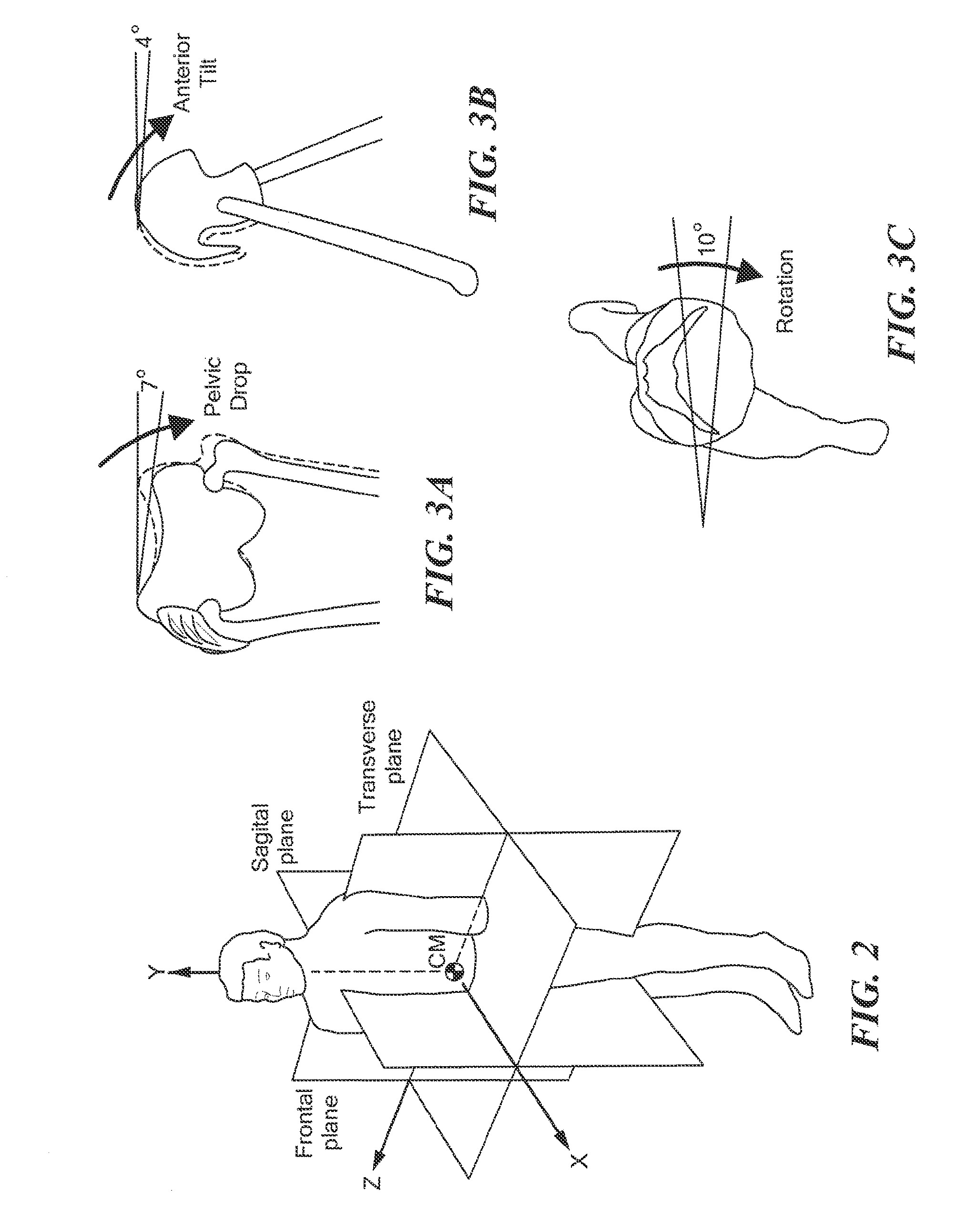Robotic gait rehabilitation training system with orthopedic lower body exoskeleton for torque transfer to control rotation of pelvis during gait
a technology of torque transfer and robotic gait, which is applied in the field of robotic gait rehabilitation training system with orthopedic lower body exoskeleton for torque transfer, can solve the problems of various primary gait deviations, diseases or injuries that affect the ability of people to walk, etc., and achieve the effect of improving torque transmission to the pelvis and facilitating robotic gait retraining
- Summary
- Abstract
- Description
- Claims
- Application Information
AI Technical Summary
Benefits of technology
Problems solved by technology
Method used
Image
Examples
Embodiment Construction
[0062]The disclosure of U.S. Provisional Patent Application No. 61 / 500,797, filed on Jun. 24, 2011, is incorporated by reference herein.
[0063]Human gait is comprised of strides, which are the intervals between two consecutive heel strikes. See FIG. 1. Gait markers, such as toe-off, are used to identify the phases of gait, the swing phase and the stance phase. The stance phase lasts approximately 60% of the gait cycle, while the swing phase takes up the remaining 40%. Both limbs are in contact with the ground for about 10% of the cycle, which is referred to as double limb support.
[0064]During normal gait, the pelvis rotates in three planes: frontal, sagittal and transverse. See FIG. 2. Rotation of the pelvis in the frontal plane is termed obliquity, rotation in the sagittal plane is termed pelvic tilt, and rotation in the transverse plane is termed pelvic rotation. During single limb support, these rotations happen about the supporting limb's hip joint. Pelvic drop, anterior tilt and...
PUM
 Login to View More
Login to View More Abstract
Description
Claims
Application Information
 Login to View More
Login to View More - R&D
- Intellectual Property
- Life Sciences
- Materials
- Tech Scout
- Unparalleled Data Quality
- Higher Quality Content
- 60% Fewer Hallucinations
Browse by: Latest US Patents, China's latest patents, Technical Efficacy Thesaurus, Application Domain, Technology Topic, Popular Technical Reports.
© 2025 PatSnap. All rights reserved.Legal|Privacy policy|Modern Slavery Act Transparency Statement|Sitemap|About US| Contact US: help@patsnap.com



